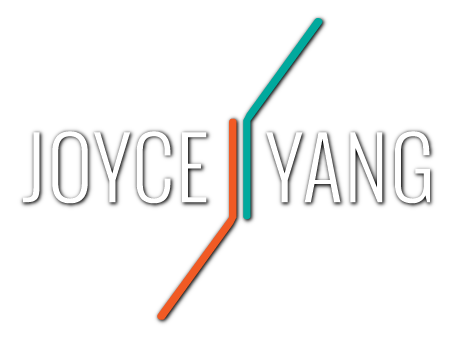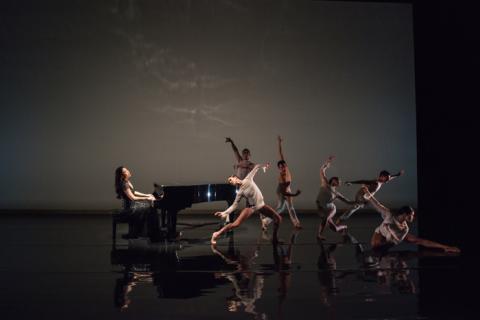
Music and Movement
About 10 years ago I sat down to watch the Nederlands Dans Theater dance to the music of Philip Glass. Minimalism hadn't resonated with me in the past, but as I listened to the music with the added context of the dancers’ movements I began to hear that it was brimming with moments of tension, confinement and excitement! After attending this one-hour dance performance, I was amazed that another art form could completely change the way I thought about my own art. With this realization, an idea started to take root. I began to think about what it would be like to work alongside a choreographer and dancers to bring others that same transformative experience.
Three years ago, when I went to the Joyce Theater and saw the Aspen Santa Fe Ballet dance for the first time, I knew I had found my partners for this project. They danced to three genres of music and I was astounded by their versatility - excelling in both classical ballet and modern dance. When I finally gathered the nerve to approach the Aspen Santa Fe Ballet to ask if they’d be willing to collaborate with me on a project, I was thrilled that they were open to the idea. They introduced me to Jorma Elo, a choreographer whose skill at integrating music and movement is unparalleled. On our first meeting in New York City's Steinway Hall, I was shocked that he brought his own score to our meeting (but what was even more shocking was seeing how fit he was!) He wrote and sketched in his score as I explained my set of visuals.
After months of thought and discussion we decided on Robert Schumann’s Carnaval as the centerpiece of the project. I’ve always thought of Schumann as a very visually enticing composer – vivid colors and unusual shapes always seemed to jump out from his score. His language is unlike any other: his thoughts are expressed directly and sharply without introductions or conclusions – and his music always seems to be the playground for all his personalities to coexist in "perfect harmony" (in a dysfunctional family dynamic kind of way). I've always believed that he is a bit of a “musician’s composer” in that his works constantly surprise and defy traditional forms. He weaves a madness full of “inside jokes” that we musicians love to try and unlock. There are so many nuances that I have wondered how many of these brilliant moments are actually understood by audience. With the addition of Jorma’s choreography, I knew that audiences would experience this music in a new way.
This past August I met with Jorma and the dancers in Aspen, where the Santa Fe Ballet maintains a residency. For over two weeks we spent entire days together as Jorma's new choreography unfolded one movement at a time. We worked 6+ hours a day, I played my heart out as dancers leaped through the thin air (it's much harder to dance at 8,000 feet above sea level), drank Kombucha and ate peanut butter during breaks (the two most popular choices for replenishment). By the end of the second week, I felt like I had become part of the group. It was one of the most terrifying, unfamiliar, and exhilarating times of my life! If you had asked me earlier in the year, I would’ve told you that I knew Carnaval very well. Well - everything I thought I knew about the piece went out the window in the first rehearsal!
The things that Jorma and the dancers found interesting about the music were sometimes things that I had never considered. Musicians tend to get stuck on the literal interpretation of the score, but Jorma did an amazing job of interpreting the energy and mood of the music. Together, we tried to find the right balance between music and movement – building on a constantly changing landscape. Today I think I play Carnaval very differently than I did before our rehearsal period.
The dancers told me they've never had a musician present for over two weeks of rehearsal. Usually, the musicians come in the day before the concert, trying to replicate the music of the recording they've been working with. Our ample time together has allowed us to play cross-genre chamber music. We started to really understand each other's parts and learned how to shift and bend to each other when a spontaneous moment presents itself (a slight variation in energy or timing from the "original") I started to draw their movements in my score, which now looks like a map to an elaborate theme park.
The final work will be performed with me on stage as a part of the troupe. Alongside Schumann's Carnaval, I will join them in performing two additional works by Leoš Janáček and... Philip Glass! The world premiere will be on March 24 in Aspen, presented in collaboration with the Aspen Music Festival and School, with encore performances in Santa Fe (March 31), Costa Mesa (April 5), and Los Angeles (April 7).
